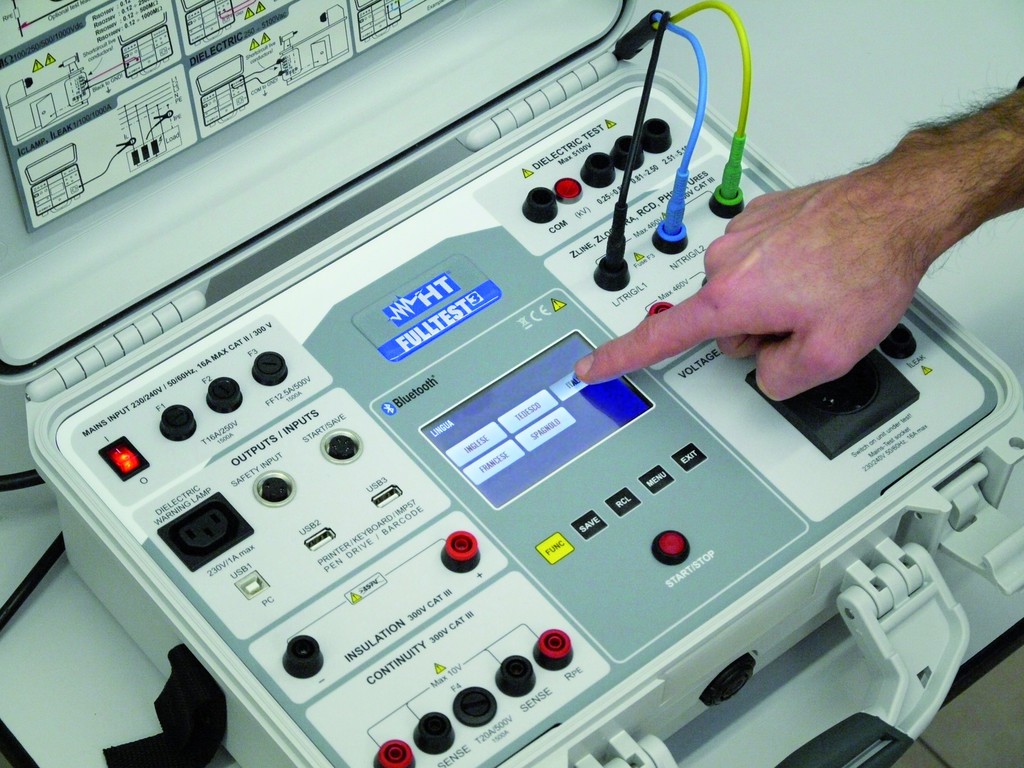
 |
Charlotte Stonestreet
Managing Editor |
| Home> | MACHINE BUILDING & ENGINEERING | >Machinery Safety | >Safety test instrument |
Editor's Pick
Safety test instrument
31 July 2015
In January 2009 a standard was introduced by the International Electrotechnical Commission (IEC) governing the safety and performance of electrical switchgear and controlgear assemblies –IEC 61439 Low-voltage switchgear and controlgear assemblies (LV boards). Available from Accute Sales, the FULLTEST3 performs all tests required by the standard in a reliable and fast way.

Standard IEC 61439-1 includes general rules for LV switchgear assemblies and sets the requirements relative to construction and the safety and maintenance of switchboards; identifying nominal features, environmental service conditions, plus the mechanical, electrical and performance requirements. The other parts are relative to the specific type of switchgear assemblies:
- IEC 61439-2: Power switchgear and controlgear assemblies
- IEC 61439-3: Distribution boards (replaces former standard IEC 60439-3)
- IEC 61439-4: Assemblies for construction sites (replaces former standard IEC 60439-4)
- IEC 61439-5: Assemblies for power distribution (replaces former standard IEC 60439-5)
- IEC 61439-6: Busbar trunking systems (replaces former standard IEC 60439-2)
The transition from the old series (IEC 60439) to the new series (IEC 61439) took place gradually. The new standard IEC 61439 had an overlapping period during which both standards were in force, until the old one was withdrawn in January 2014. At that point, LV switchgear had to be checked to ensure compliance with the new standard exclusively.
The previous standard IEC 60439 (tracing back to 1990) differentiated the tests to be performed by dividing switchgear assemblies into two distinct categories: AS (serial) and ANS (optional). The new standard ignores the old categories and simply defines switchgear assemblies as compliant if they comply with the design checks provided by the standard itself (IEC 61439):
Design verification: is intended to verify that the design of an assembly or assembly system is compliant with the requirements of this series of IEC 61439 standards.
Routine verification: is intended to detect faults in materials and workmanship and to ascertain proper functioning of the manufactured assemblies. It falls under the responsibility of the Assembly Manufacturer or Panel Builder. It is performed on each assembly or assembly system.
In compliance with IEC 61439....
- a manufacturer of mass-produced assemblies shall carry out ‘design verifications’ on a significant number of samples as well as ‘routine verifications’
- a worker assembling a switchgear designed by others without performing any modification is not required to carry out ‘design verifications’, but only ‘routine verifications’
- a worker assembling a switchgear designed by others, that performs even a single modification becomes the manufacturer and is required to carry out both ‘design verifications’ and ‘routine verifications’
- a worker assembling even a single custom switchgear becomes its manufacturer and is required to carry out both ‘design verifications’ and ‘routine verifications’.
The tests required by ‘design verifications’ for a standard distribution board CAT III 300V are:
- a withstanding voltage test at 1890V~
- a 4 kV pulse test or withstanding voltage test at 3400V (Tab.10)
For a board under CAT IV 300V the required tests are:
- a withstanding voltage test at 1890V~
- a 6 kV pulse test or withstanding voltage test at 5100V
The following tests shall be carried out irrespective of overvoltage category:
- check of mass earthing as well as check of continuity on protection conductors with a test current of at least 10A
The following routine verifications shall be implemented independently:
- a withstanding voltage test at 1890V~ or, for boards with rated current up to 250A, an insulation test up to 500V
FULLTEST3 performs all tests required by IEC 61439 in a simple, reliable and fast way. Moreover, the instrument carries out a considerable number of safety tests making it a flexible solution. Besides continuity of protective conductors, insulation and withstanding, FULLTEST3 tests type A, AC, and B general, selective and delayed RCDs, curve B, C, D, and K MCBs and type gG and aM fuses, line/fault impedance with standard or high resolution, non-trip earth loop impedance, leakage current, etc. FULLTEST3 is provided with innovative interfaces such as a colour touch-screen graphical display, 3 USB ports for PC connection, a USB memory stick, a USB printer and bar code readers.
FULLTEST3 is said to be the ideal partner for designers, manufacturers and installers.
- No related articles listed


















